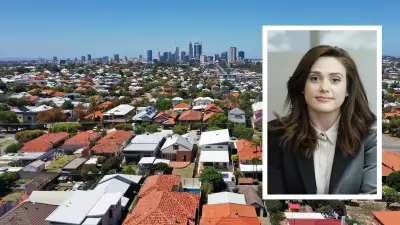
Australia is falling dramatically short of its housing construction targets, with new analysis revealing the nation is missing its annual building goals by tens of thousands of homes. According to Master Builders Australia, the Albanese Government's ambitious plan to construct 1.2 million homes by 2029 is significantly off track, with the country currently facing an annual shortfall of 48,000 properties.
The Modular Solution to Australia's Housing Crisis
The prefabricated housing sector claims it holds the key to bridging this substantial gap, but requires crucial policy adjustments from governments and financial institutions to reach its potential. Prefab homes, constructed in factories before being assembled on-site like building blocks, offer a dramatically faster alternative to traditional construction methods.
Master Builders data reveals conventional home construction in Australia takes approximately 55 weeks from start to finish, while prefab homes can be completed in just 16 weeks on average. This represents a potential time saving of nearly 75%, which could significantly accelerate housing delivery across the country.
The cost spectrum for modular housing is equally diverse, ranging from basic granny flat-style dwellings starting at around $100,000 to architecturally designed premium products exceeding one million dollars. This flexibility allows prefab construction to cater to various budget levels and housing needs.
Overcoming Stigma and Skills Shortages
Despite its potential, the prefab industry faces significant challenges, including public perception issues and critical workforce shortages. Damien Crough, a Melbourne-based prefab builder and Executive Chairman of industry lobby group prefabAus, identifies these as major barriers to growth.
"People have that stigma or perception that it is that cheap fibro shack or something from the 1950s or 1960s, and haven't actually seen the high-quality architecturally designed homes that are being built now," Crough explained.
The industry is actively working to change these perceptions through consumer education initiatives, including an upcoming television show scheduled for release in February next year. This consumer-focused program aims to showcase the speed, performance and quality of modern prefab homes available in Australia.
The sector is also grappling with Australia's broader trades shortage, which currently sits at approximately 300,000 workers. Crough notes that prefab housing is particularly affected by this shortage, prompting a shift toward what he terms "industrialised construction."
"We're leveraging technology and particularly digital technology and moving to what we call the fourth industrial revolution which most other industries around the world have already moved to," Crough said.
The industry is looking beyond traditional trades like plumbing and electrical work, seeking software engineers and technology professionals to drive innovation. Artificial intelligence, robotics, automation and 3D printing are all becoming increasingly important in modern prefab construction.
Banking Support and Education Initiatives
Significant progress is being made on the financial front, with major banks beginning to adapt their lending models to accommodate prefab construction. The Commonwealth Bank is leading this charge, preparing to launch tailored mortgages for prefab homes before Christmas.
These specialized loans will operate similarly to standard construction loans, with progressive payments released as the home construction advances. For projects using CommBank Assessed Manufacturers, borrowers can access up to 80% of the build contract price during the offsite construction phase, with remaining funds released once the home is affixed to the land.
Crough confirms these banking changes are already generating increased buyer interest. "It really made a significant change, and it's going to create a huge growth in the sector," he noted.
Educational institutions are also preparing for the prefab revolution. A national Centre of Excellence for future housing construction, funded by both Victorian and Federal governments, will open at Melbourne Polytechnic in Heidelberg in 2029. NSW TAFE is considering a similar $400 million facility in Wollongong, while Queensland and Western Australia are exploring their own options.
Currently representing 8% of homes built in Australia, the prefab industry aims to capture 30% of the market by 2035. With banking support strengthening and public perception gradually shifting, many industry experts predict a significant boom in prefabricated housing by 2026.





